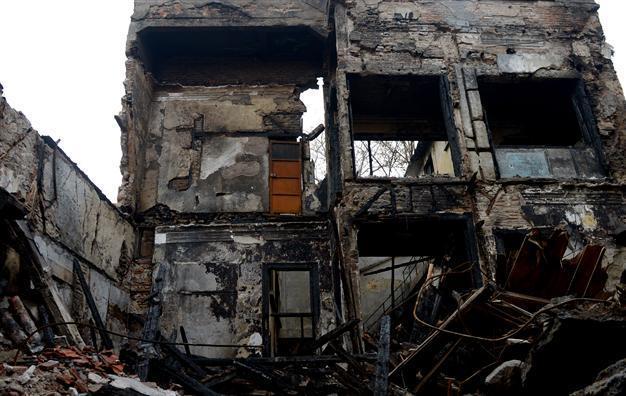Aegean city of İzmir fails to preserve its historical houses
İZMİR - Anadolu Agency

Many historic structures were abandoned to their fate. What we lost is not İzmir houses but humanity, says researcher and writer Orhan Beşikçi. AA photo
İzmir’s historical houses, which are considered among the best examples of civil architecture and most of which date back to the 19th and 20th century, are in need of attention. The old structures can be seen in İzmir’s various neighborhoods.Dating back to 8,500 years ago, İzmir has experienced many earthquakes and fires throughout its history and most of its houses have burned down. The old houses, that still survive, are the ones that were built in the end of the 19th century and beginning of the 20th century.
Looking at these houses, besides Greek architecture, one can see the change in the civil architecture in the Ottoman Empire. Most of these houses are located around Kadifekale and Basmane neighborhood’s Tilkilik and Namazgah areas. These houses are considered the history of İzmir.
The two-storey houses’ big rooms are supported by wooden buttresses. Their ground floors served as storage and bedrooms are located on the second floor. Almost all houses have a courtyard at the entrance, staircases in this courtyard, niches on the walls, a fountain pool in the courtyard and a well.
The houses include two parts, a selamlık (area reserved for men) on the ground floor and haremlik (area reserved for women) in the upper floors. Drawing attention for their balcony and windows, these houses are made of stone up to a certain height and the upper parts are made of wood.
Researcher writer Orhan Beşikçi said İzmir failed to preserve its cultural values from the Hellenistic, Roman, Byzantine and Ottoman eras. “Many historic structures were abandoned to their fate. What we lost is not İzmir houses but humanity.”
Cultural beings
Beşikçi said it is still possible to see the best examples of İzmir architecture in the region between Kadifekale and Basmane, and they should be reserved. He said the history of Bamane and its surrounding dated back 2,500 years ago.
“This region is home to a lot of rich structures in terms of cultural beings. We can see the value from the Hellenistic, Roman, Byzantine and Ottoman eras. Rare artifacts that still survive are
İzmir’s cultural beings. This region is very archaeologically rich, but we can’t protect the old structures,” he said.
Beşikçi noted the necessity of taking the inventory of artifacts in the region. “We need really serious projects for their survival,” he added. “İzmir was given the Urban Transformation Award from the Union of Historical Towns after the restoration of Oteller Street. But the street is now returning to its former situation. New projects should be achieved to keep the old İzmir houses alive.”
















